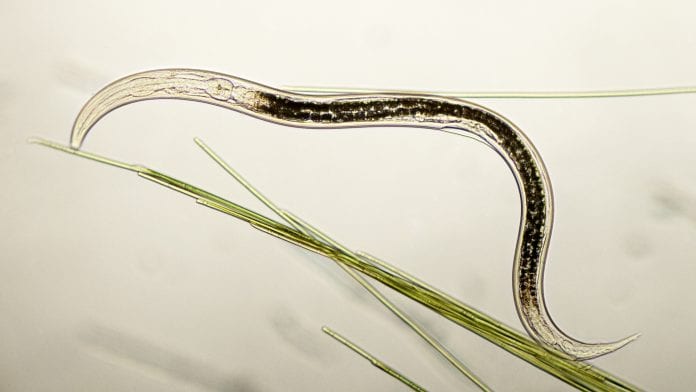
Insights from a new study found that microRNAs are important in controlling protein aggregates.
In the study scientists have discovered that an ancient worm could hold the key to discovering how to destroy toxic cells in diseases such as Parkinson’s and Huntington’s disease.
This is due to the fact that the Caenorhabditis elegans worm holds the same particular RNA sequence as human beings, despite being separated by 600 million years of evolution.
Associate Professor Roger Pocock, from the Monash Biomedicine Discovery Institute (BDI), and colleagues from the University of Cambridge led by Professor David Rubinsztein, published the teams findings in the journal eLife.
MicroRNA
MicroRNAs, short strands of genetic material, are tiny but powerful molecules that regulate many different genes simultaneously. The scientists sought to identify particular microRNAs that are important for regulating protein aggregates and homed in on miR-1, which is found in low levels in patients with neurodegenerative diseases such as Parkinson’s disease.
Associate Professor Pocock said: “The sequence of miR-1 is 100% conserved; it’s the same sequence in the Caenorhabditis elegans worm as in humans even though they are separated by 600 million years of evolution.
“We deleted miR-1 in the worm and looked at the effect in a preclinical model of Huntington’s and found that when you don’t have this microRNA there’s more aggregation.
“This suggested miR-1 was important to remove Huntington’s aggregates.”
The researchers then showed that miR-1 helped protect against toxic protein aggregates by controlling the expression of the TBC-7 protein in worms. This protein regulates the process of autophagy, the body’s way of removing and recycling damaged cells and is crucial for clearing toxic proteins from cells.
Proteins in worms
Associate Professor Pocock said: “When you don’t have miR-1, autophagy doesn’t work correctly and you have aggregation of these Huntington’s proteins in worms.”
“Expressing more miR-1 removes Huntington’s disease aggregates in human cells. It’s a novel pathway that can control these aggregation-prone proteins. As a potential means of alleviating neurodegenerative disease, it’s up there.”
Professor Rubinsztein then conducted research which showed that the same microRNA regulates a related pathway to control autophagy in human cells. Additional work by Associate Professor Pocock’s colleagues showed that when human cells are supplied with a molecule called interferon-b the miR-1 pathway is upregulated, revealing a way of manipulating it.
He said the studies demonstrated the fundamental importance of discovery research. “We asked a fundamental biological question to dissect a molecular mechanism that now is shown to be really important for potential therapies.”
The researchers have provisionally patented their findings and are in discussions with pharmaceutical companies about translating the research. They will further test it in preclinical models for Huntington’s disease and Parkinson’s disease.

























Please quit giving people hope with this pseudoscience!!!!